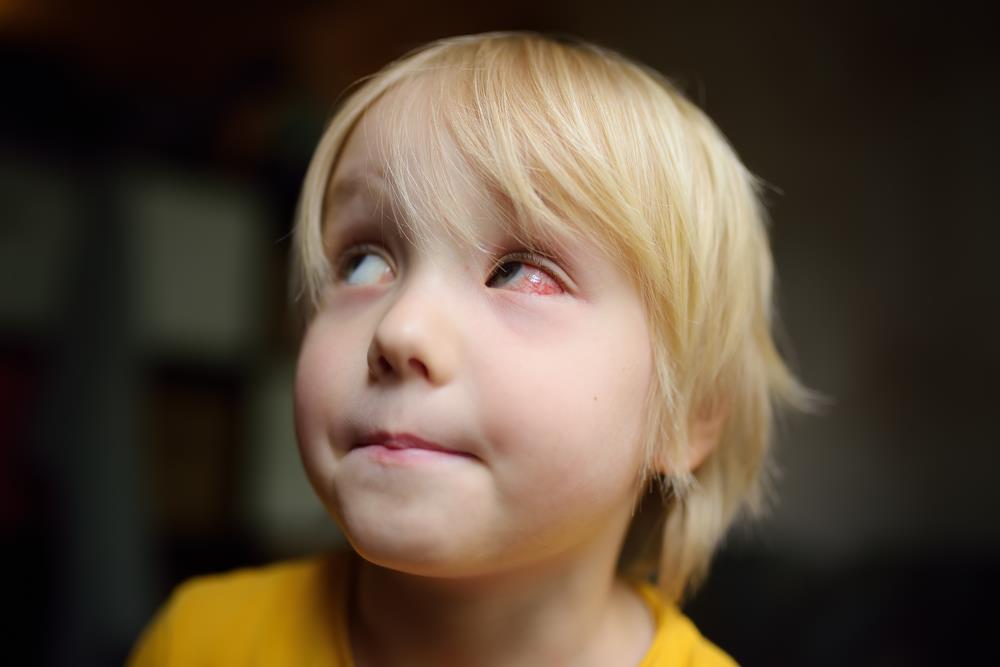What You Should Know About Pink Eye
Your little one woke up with her eyes covered in a crusty or gooey discharge. Her favorite color may be pink, but you’re really hoping she doesn’t have pink eye! Should you go about your daily routine or call our office immediately for an appointment?
What is pink eye?
Pink eye, or conjunctivitis, is what we call inflammation or infection of the transparent membrane of your eyeball. This part of your eye is called the conjunctiva. The conjunctiva lines your eyelid and covers the white part of your eyeball. The “pink” of pink eye is caused by inflammation of the small blood vessels in the conjunctiva, causing the white of the eye to take on a pink or even red appearance. While pink eye is unpleasant, it rarely affects vision and treatments can help ease the discomfort.
Symptoms of pink eye?
Symptoms of conjunctivitis (pink eye) are not limited to the infamous crusty or gooey discharge. If your child is old enough, he may describe feeling as if there is something in his eye or rub at his eye(s). Your child may display other symptoms that can indicate conjunctivitis including:
- The white of the eye may have a pink or red tinge
- The conjunctiva (the thin layer that lines the white part of the eye and the inside of the eyelid) and/or eyelids may be swollen
- Watery, running eyes due to increased tear production
- Itching, irritation, and/or burning
- Discharge (pus or mucus)
- Crusting of eyelids or lashes, especially in the morning
Pink eye can be caused by a bacterial infection, viral infection, or an allergic reaction. In babies, it can also be the result of a tear duct that is not completely open.
Bacterial (infectious) conjunctivitis
Bacterial conjunctivitis is most often identified by the presence of yellow-green discharge. The pus will frequently cause the eyelids to be stuck together, which can be very alarming for small children. It will sometimes occur in conjunction with an ear infection. Bacterial conjunctivitis is contagious, caused by bacteria that are common with children. These include ear infection, sore throat, and sinus infections. You will find that the name “pink eye” does not always correlate with infectious conjunctivitis, but there are other clear symptoms. They include a thick yellow-green discharge from the eyes during the waking hours and a crust on the lashes and outer areas of the eye after sleeping.
Many times, this type of infection is associated with an ear infection as well. It is very important that you call Entirely Kids Pediatrics for an evaluation in these instances. Antibiotic drops will treat the pink eye, but not the ear infections, so your child will need an oral antibiotic too.
Bacterial conjunctivitis is contagious as long as there is discharge from the eyes or 24 hours after treatment begins with an antibiotic.

Viral conjunctivitis
Viral conjunctivitis typically occurs along with symptoms of an upper respiratory infection, such as a cold. It will usually present in one eye and spread to the other within the course of the illness. Unlike bacterial conjunctivitis, the eye discharge in viral conjunctivitis is not thick and sticky, but watery. Viral conjunctivitis can be contagious.
Allergic Conjunctivitis
Although their symptoms can be similar, allergic conjunctivitis differs from pink eye caused by viral or bacterial infection of conjunctiva. Allergic conjunctivitis is not contagious. While pink eye frequently presents in one eye and spreads to the other, allergic conjunctivitis typically affect both eyes at once. It is often a reaction to animal dander, dust mites, pollen, or mold. Your child may say they feel like their eyes are very itchy and you will probably observe that their eyes look swollen and red, with frequent watering. It can also be accompanied with discharge that is stringy in consistency. It is very likely additional symptoms of allergic reaction will be present: sneezing, itchy nose, throat itchiness or scratchiness, or asthma.
There are two types of allergic conjunctivitis: seasonal and perennial. The seasonal version of allergic conjunctivitis is most likely to occur during the spring and summer months when pollen allergies are at their peak, but it is not unheard of to see allergic conjunctivitis during the fall. Perennial allergic conjunctivitis can occur throughout the year because it is an allergic response to indoor allergens such as animal dander, dust, or mold.
Treatment of conjunctivitis
Viral conjunctivitis will generally resolve in 7 to 14 days without treatment. In rare cases, viral conjunctivitis can take three weeks or more to resolve. Antibiotics will not generally be of help in treating viral conjunctivitis, with the exception of conjunctivitis caused by the herpes simplex virus or varicella-zoster virus. Dr. Leung may prescribe antiviral medication to treat these types of conjunctivitis.
For expert care and personalized treatment for common pediatric conditions like pink eye, visit Entirely Kids Pediatrics for comprehensive healthcare services.

For bacterial conjunctivitis, Dr. Leung may prescribe antibiotic eye drops or antibiotic ointment for the eyes. These can help shorten the duration of the infection, reduce complications, and help prevent spreading the infection to others. It is possible for mild bacterial conjunctivitis to resolve without antibiotic treatment and without causing any complications.
If your child is having any type of conjunctivitis, please contact our office for an appointment. Dr. Leung will examine your child’s eyes to determine which type of conjunctivitis is affecting them and discuss options for treatment with you.

